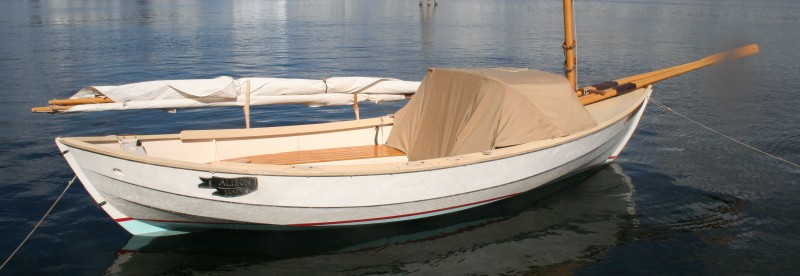
With a pair of Y-shaped crooks holding the sails and spars and the oars on the foredeck, the cockpit is clear of clutter.
Oars, masts, and spars get you where you want to go in a small boat built for rowing and sailing, but those long sticks are awkward to stow when they’re not in use. I saw one interesting solution to the problem when I was kayaking the coast of Croatia.
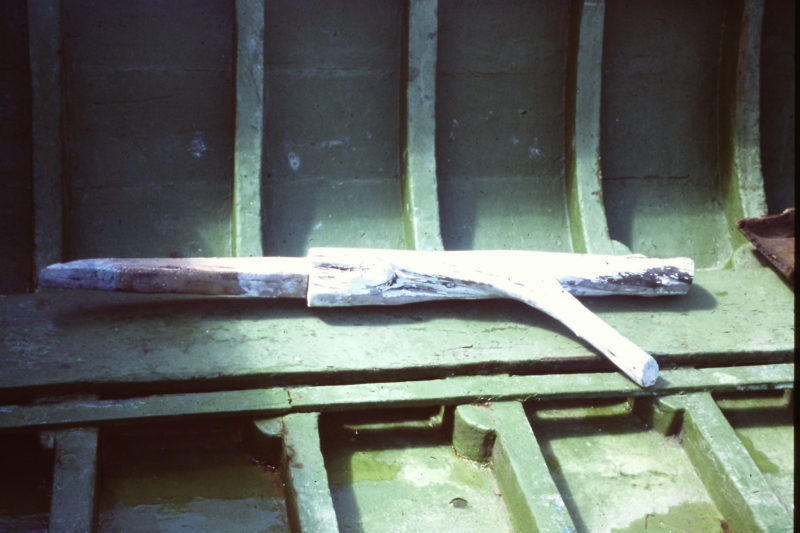
This natural crook has a squared tenon to fit in a slot in the gunwale of a Croatian fishing boat.
In the island village harbors there were lots of small fishing boats equipped with natural crooks set in the gunwales. Some crooks had more than one branch, providing two places to set spars or oars. This crook has a squared tenon to fit into a square hole in the gunwale. Others are round and tapered to fit in tholepin sockets.

This Croatian work boat has metal “crooks.”
A few boats had metal equivalents set in oarlock sockets. A pair of these held long items, like the oars shown below, just above the gunwale and clear of the cockpit.
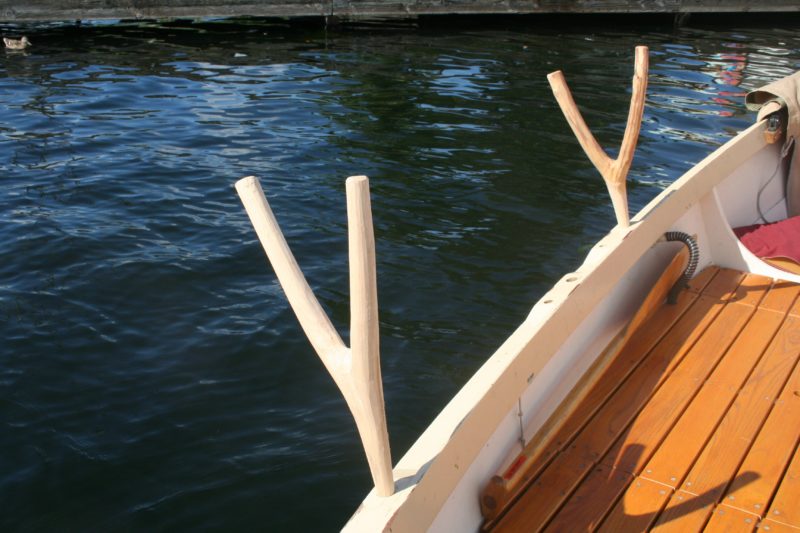
These maple crooks took only 30 minutes or so to make.
I’ve cut pairs of crooks from maple windfalls and used a spokeshave to take the bark off and taper the bottom end to fit tholepin sockets.
In rough conditions I’d opt for an arrangement that’s more secure and doesn’t interfere with the operation of the boat, but at anchor and on days of mild weather, having a place for spars and oars keeps the cockpit open and comfortable. I’ve seen many boaters stow oars in a pair of oarlocks in a manner similar to this, but the crooks have the capacity to hold more stuff. With the sails and spars you see here held up high, I have enough clearance for rowing.
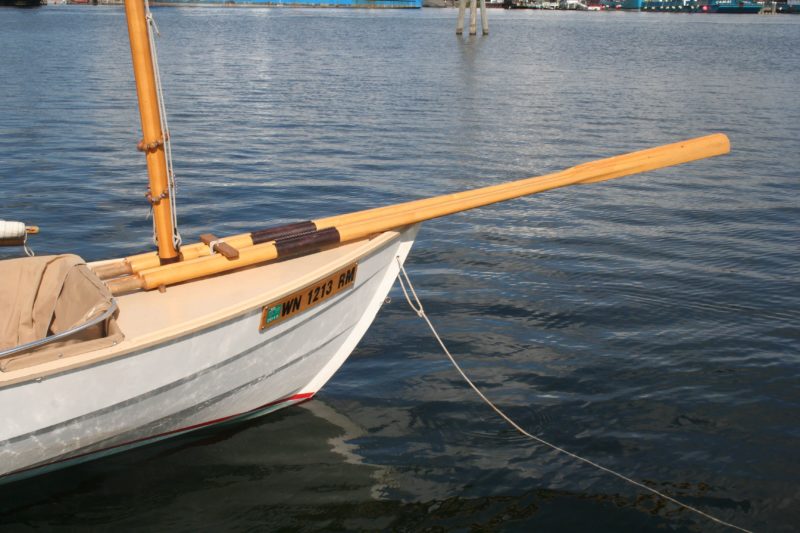
Two pairs of oars secured to the foredeck keep them out of the way while I’m sailing or at anchor.
The crooks weren’t a good solution to stowing oars while under sail. I kept the oars inboard but they were always in the way. I decided to get them out of the cockpit and fastened pairs of chocks on the foredeck of my Caledonia yawl.
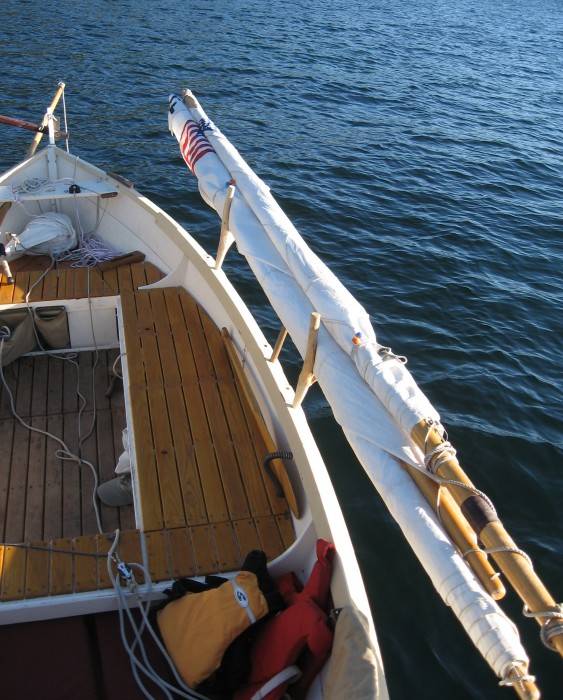
The mainsail with its yard and boom and the mizzen with its mast sit high enough that I can row at tholes between the crooks.
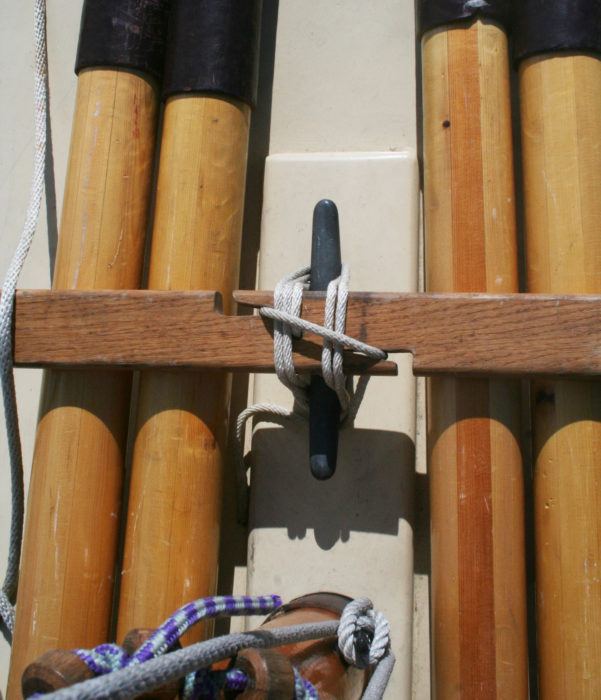
The crosspiece holding the oars has two jam-cleat-like notches for quick locking of the lashing to the cleat below.
Two pairs of oars rest in the chocks’ hollows and are held down with an oak crosspiece lashed to a deck cleat. The oars project beyond the bow like a bowsprit. I’ve come to like the look and having the cockpit uncluttered for sailing is a great pleasure.
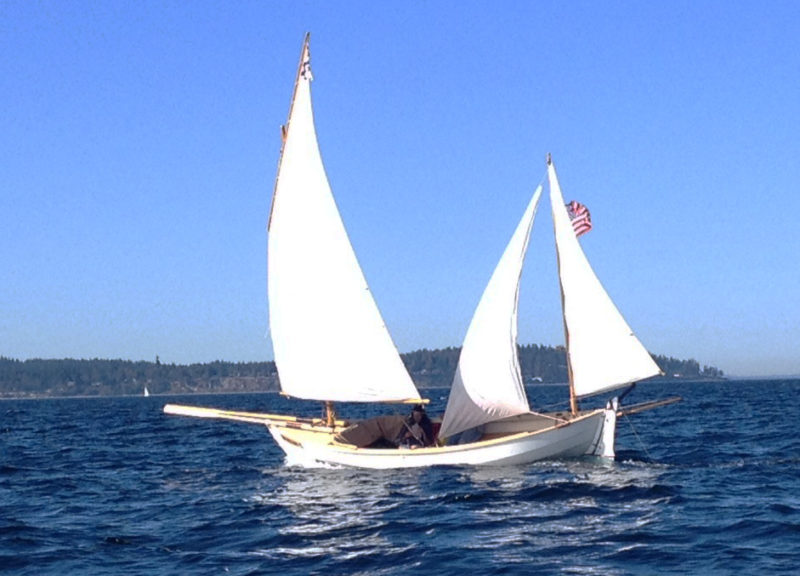 Bob Kellett
Bob KellettThe “bowsprit” on my Caledonia yawl is a pair of oars.
Different boats, of course, require different solutions to stowing oars and spars. If you’ve come up with a good solution to the problem, please email it to me and we’ll share it with our readers.![]()
Christopher Cunningham is the editor of Small Boats Monthly. He has been building and cruising in small boats since 1979.
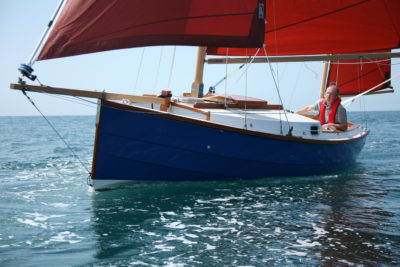
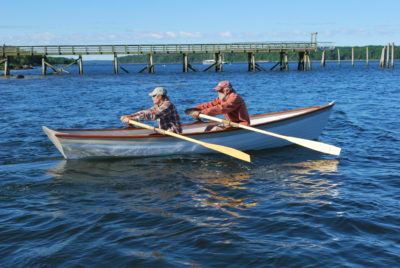
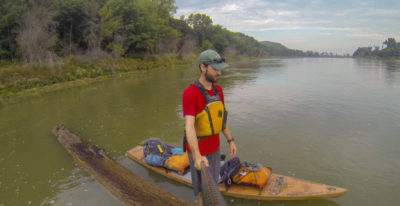
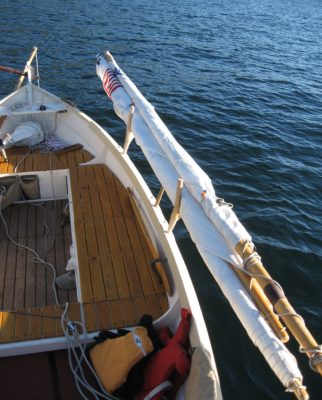
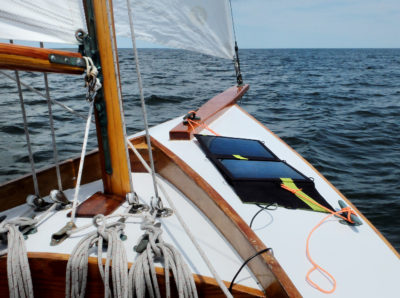
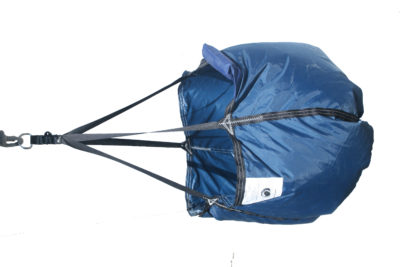
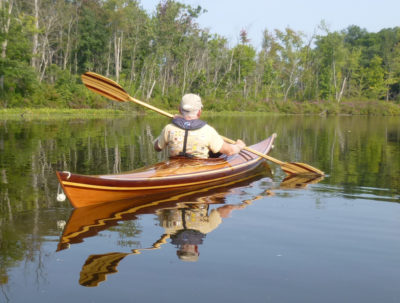
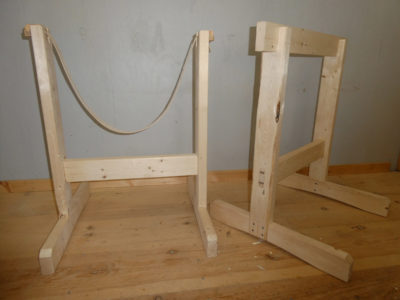
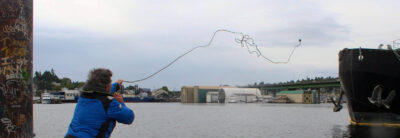
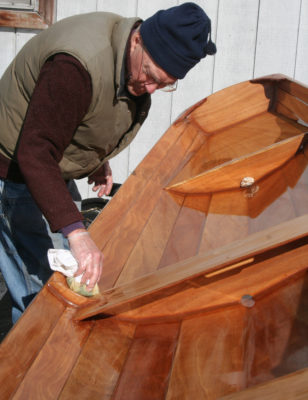
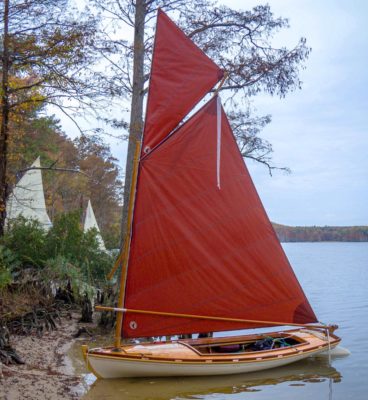
Good ideas!
Stowing oars in holders above the gunwale is also common in the traditional “lauds” of the Balearics and eastern coast of Spain.
Here is an example: http://www.pulsame.com/banco/details.php?image_id=120
I have continued skepticism of stowing methods that need oars to rest in brackets or locks. These look sketchy under sail. And I have a life long paranoia about leaving any lock like devices sticking up when not in use. Said paranoia created by having to take a kid to the hospital after he fell onto a set of horns when tripping on a dock. An imprinted bad sight. I used a chockless solution on my Harrier. A webbing loop with a Fastex buckle on the fore deck. The oars go on either side of the stem and mast and are locked in.
I quite agree, Ben, that things sticking up from the gunwale can be dangerous. The thole pins in two of my early boats were straight-sided dowels set in straight-sided holes. They’d either rattle around when the wood was dry or seize in place when the wood swelled up. When they were stuck they were as menacing as the horns of a Pamplona bull and a nuisance under sail and at the dock. I went to tapered tholes (see my article “Tholepins” in WoodenBoat issue 185) and remove them when they’re not in use. As I mentioned in this Small Boats Monthly piece, the crooks aren’t appropriate for sailing and they get removed and stowed along with the tholepins. When I’m coming into a dock, the crooks and whatever is in them make a veritable fence, so they have to come down if they’re on the dock side and long before it’s time to set fenders and handle painters. If they’re on the opposite side, they’re not in the way and at a safe remove from people on the dock.
I like your idea of using webbing and a buckle for securing oars on the foredeck. That’s sure to be a lot quicker to use than my system; I’ll make the switch.
Christopher Cunningham, Editor